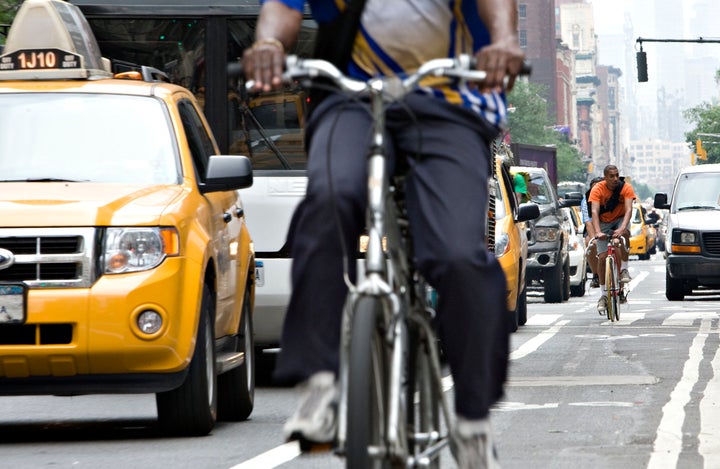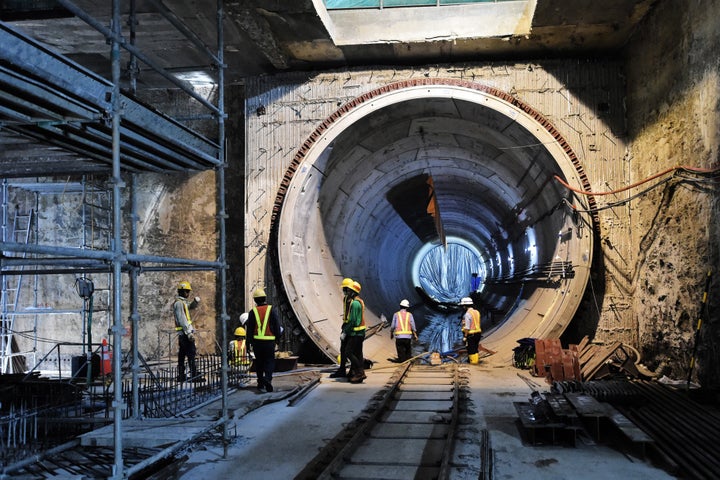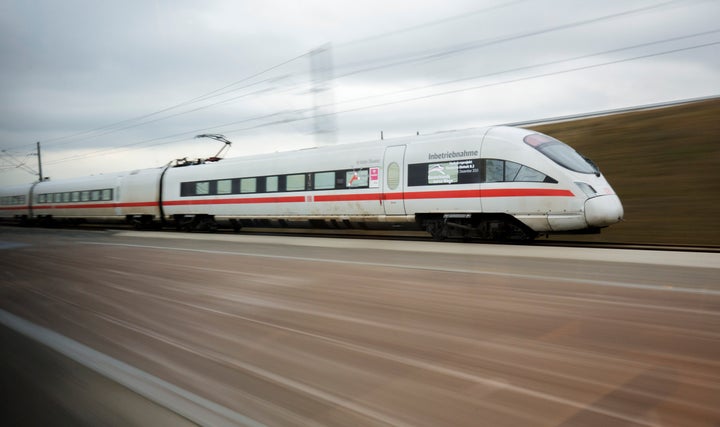President Obama is set to propose a $10-per-barrel oil tax to fund green transportation projects.
Under this bold plan, which will be part of the 2017 budget request sent to Congress on Tuesday, the government would raise an estimated $32 billion from oil companies to improve infrastructure systems across the country and invest in research and development for low-carbon technologies.
While the proposal is unlikely to receive Congressional approval, there are a number of environmentally savvy projects the government could subsidize with money raised from such an oil tax. Here are seven of them:
1. Bike lanes -- to reduce cars on the road

Bike lanes are an environmentally friendly and cost-efficient transportation investment. Obama could allot funds to cities to build new lanes, and get commuters out of carbon-dioxide emitting cars and onto two-wheelers.
2. Self-driving cars -- for fuel-efficiency

Autonomous vehicles will likely be more fuel-efficient than cars on the road today. Obama will propose an investment of $4 billion to promote the development of self-driving cars in the U.S. -- but this, like the oil tax idea, also has to be approved as part of the 2017 federal budget.
3. Elon Musk's Hyperloop -- with light-speed travel for the masses

Tesla CEO Elon Musk is investing in light-speed travel for the masses with a new business, Hyperloop Technologies, testing this year in Nevada. Hyperloop Technologies' CEO Rob Lloyd said in statement that the company "will invest first in regions where we receive government advocacy to move fast" -- so some government funds would certainly help.
4. Mass transit -- to update for efficiency

While efficient mass transit is a smart solution to save fuel and travel time, upgrades to existing infrastructure can be costly -- so can new projects. For New York City alone, the mayor's proposal of a 16-mile streetcar route is expected to cost about $2.5 billion. Building new subway tunnels could cost even more.
5. Electric cars -- to reduce greenhouse gases

The environmental friendliness of an electric car largely depends on your location. It's a question of calculating the emissions produced by gasoline car tailpipes versus the emissions produced by the electricity grids that power EVs. This makes it difficult to determine a smart federal subsidy. But assuming power grids will get cleaner, moving away from gasoline cars and toward electric ones gives us a shot at zero-carbon transportation.
6. Smart traffic tech -- to reduce gridlock

Smart traffic technology is helping to improve transit efficiency around the world, with innovations like sensors that collect real-time data and transmit them for analysis, helping cities make better transportation decisions. For instance, with congestion currently costing New York City about $13 billion in revenue, any investment to alleviate traffic would surely help.
7. High-speed rails -- to slash carbon dioxide emissions

The environmental benefits of high-speed rails are clear, with some estimates calculating that each 240-mile train trip eliminates 113 pounds of carbon dioxide per passenger. But the financial cost is real: California is considering building a 220-mph bullet train, but the estimated cost is $68 billion.
